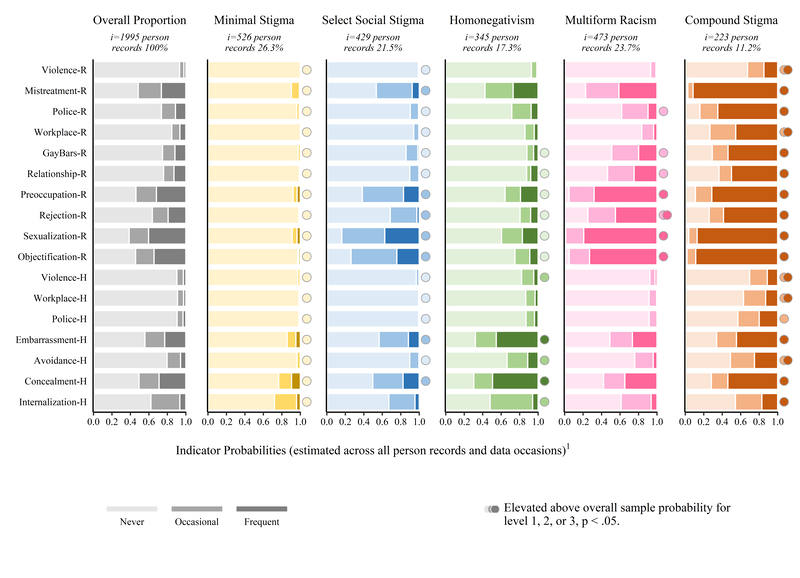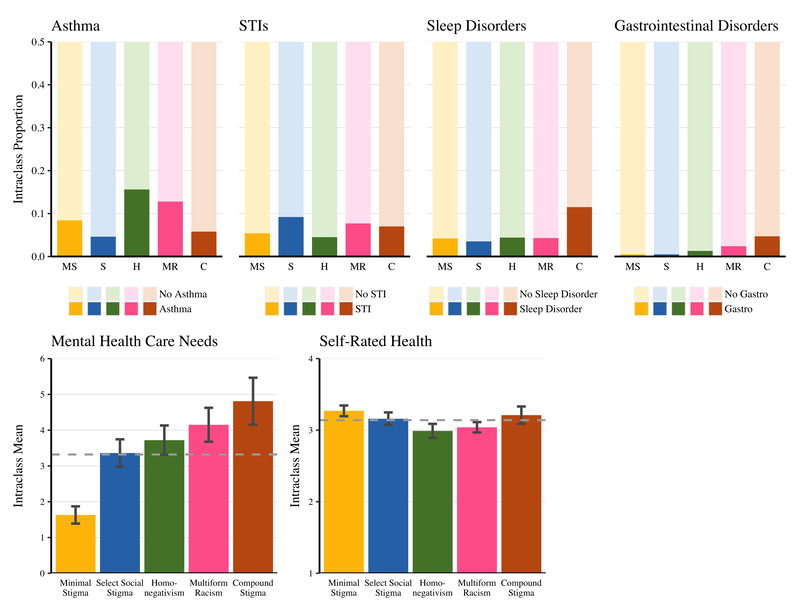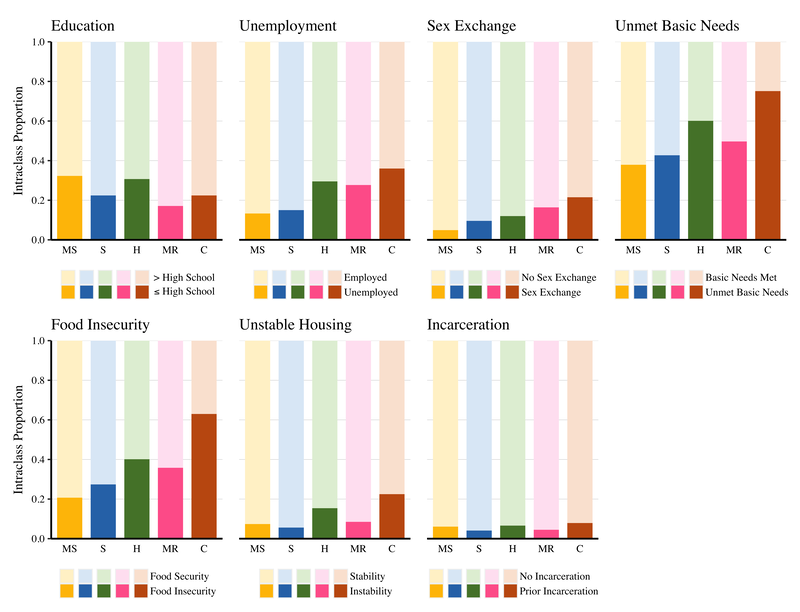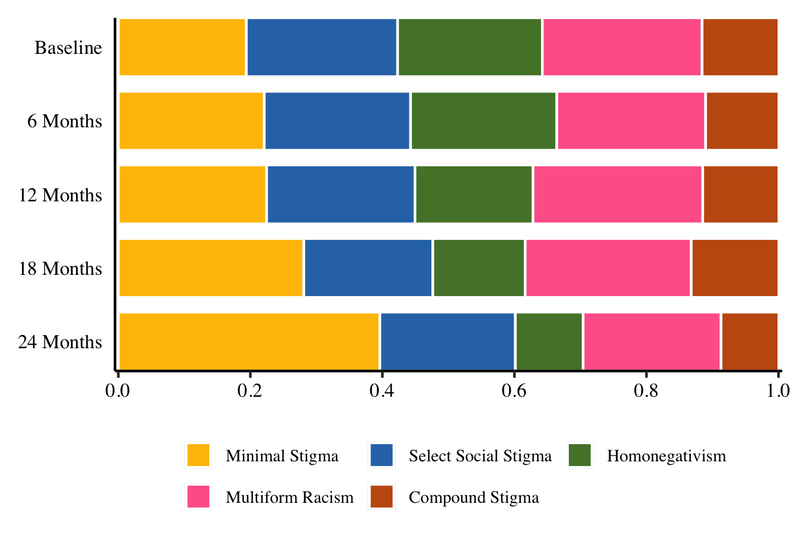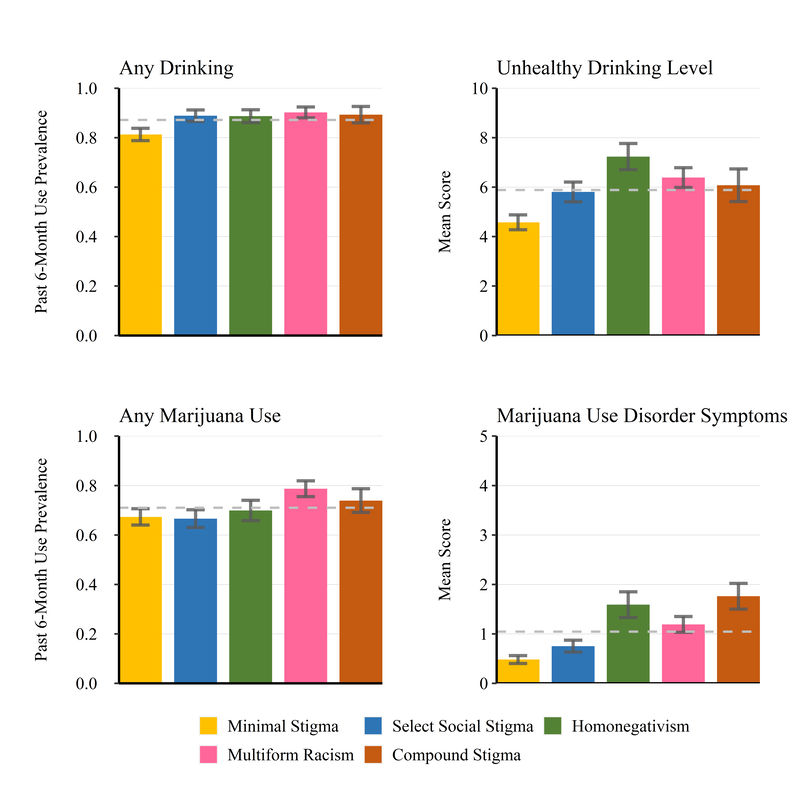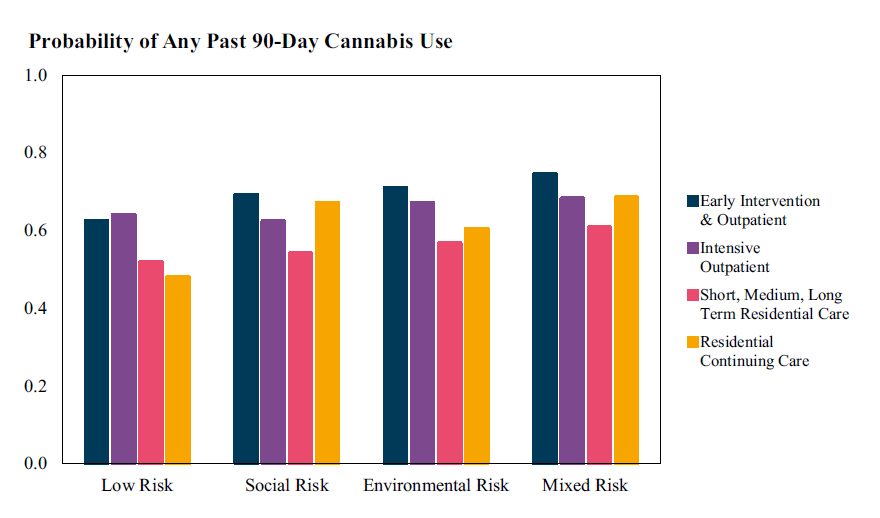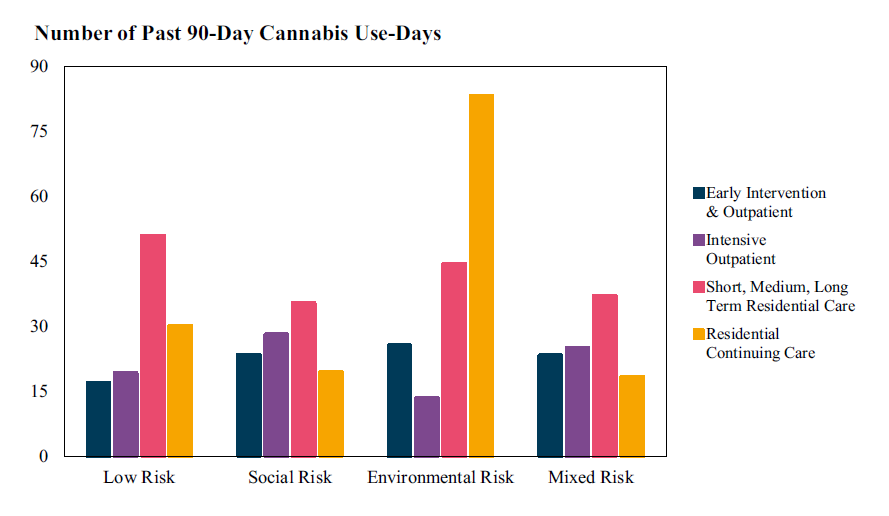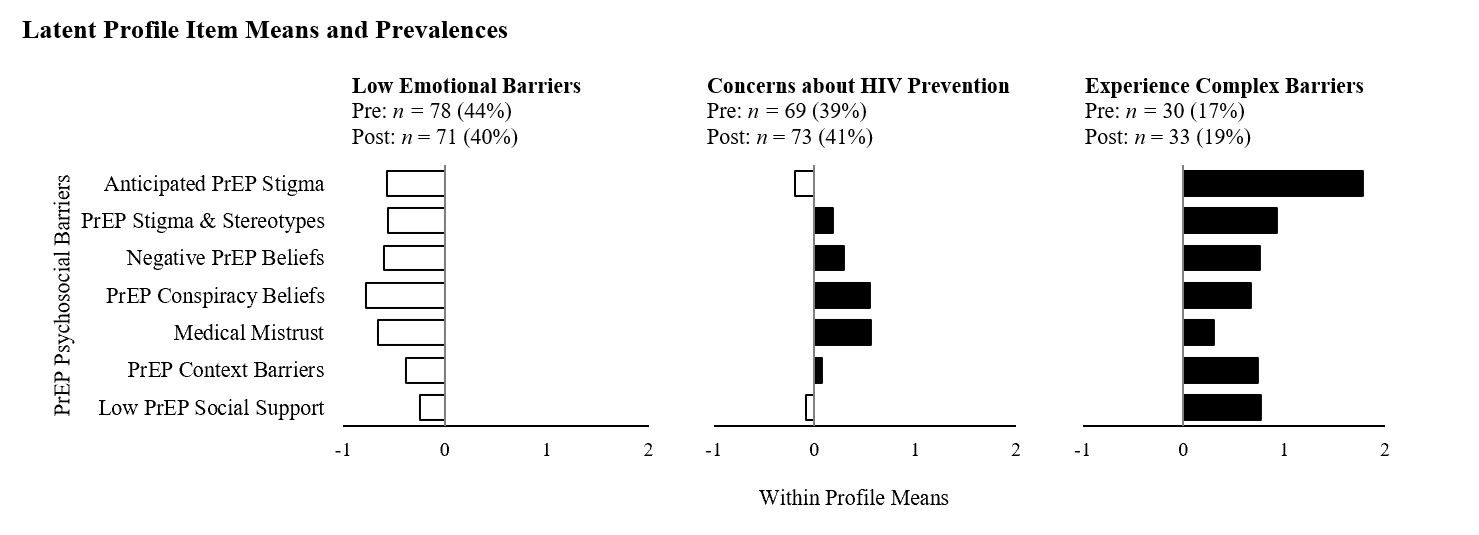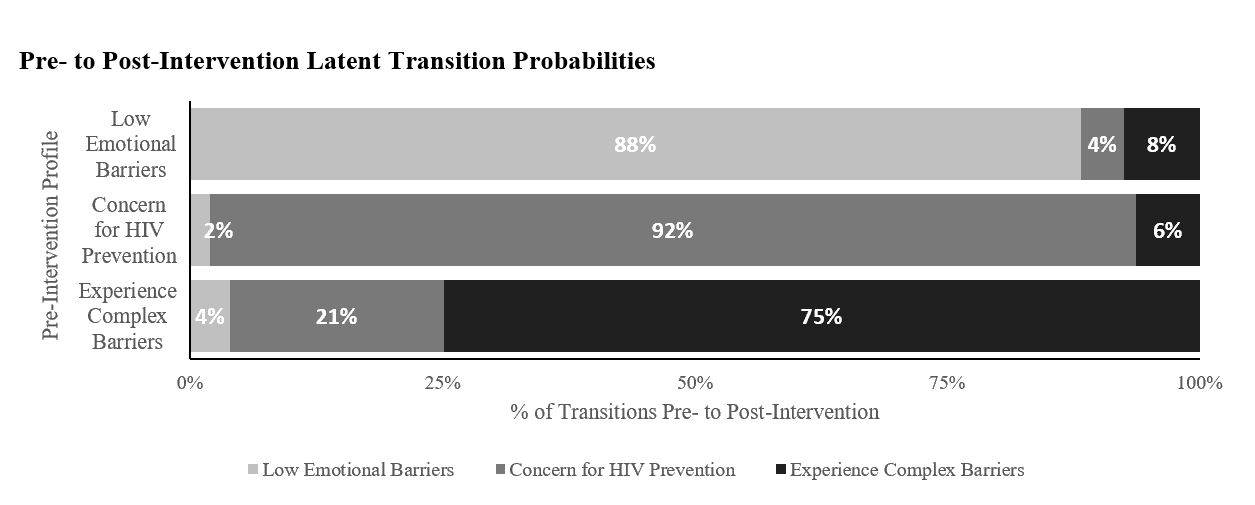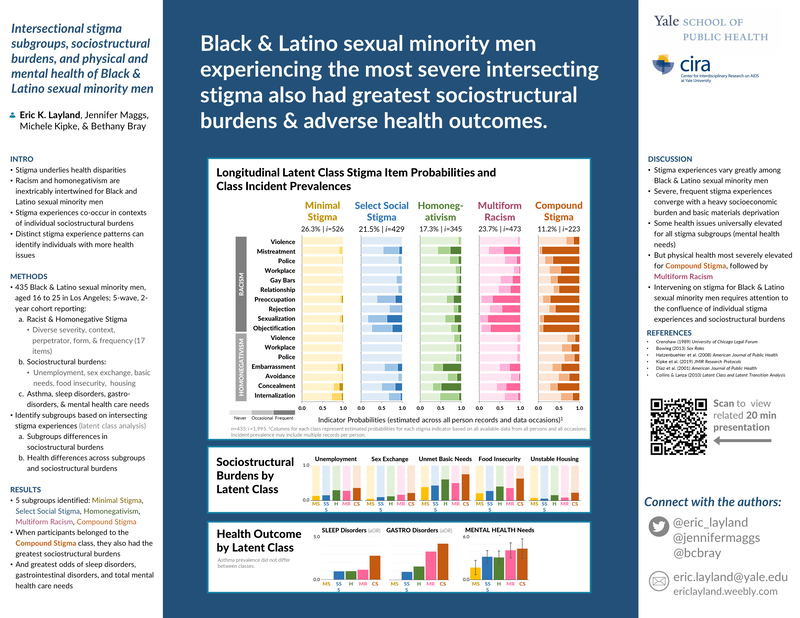Quantitative approaches to intersectionality require careful consideration of how different methods impact data and the stories we can tell about people's lived experiences using that data. By using innovative and advanced methods we can more holistically represent the complex lived experiences and harms of discrimination for LGBTQ+ people experiencing mutiple sources of marginalization.
Learn more about latent class analysis and time varying effect models below.
Latent class analysis & intersectionality
|
|
Latent class analysis (LCA) is a person-centered method that allows researchers to identify subgroups characterized by shared traits, statuses, or experiences. Person-centered means this analysis focuses on types or subgroups of people rather than centering variables. From an intersectional approach, LCA let's us look at complex patterns of stigma experiences to identify subgroups and then how these subgroups differ in terms of downstream health outcomes.
This video provides a brief explanation of how lantent class analysis can be aligned with an intersectional approach to quantitative health equity research. |
Visualizing latent class analysis
|
|
Communicating results of latent class analysis can be challenging! We've provided some examples for visualizing the latent class structure and health outcomes that differ across latent classes (or profiles). If you need support creating visualizations for your latent class analysis, contact us for a consultation.
This video provides an example of a complex, intersectional latent class structure characterized by distinct patterns of racism and heterosexism experiences in a cohort of Black and Latinx sexual minority men. |
View the gallery below for example visualizations of latent class analysis, latent profile analysis, and latent transition analysis.
For more on these examples see: Layland, Maggs et al. (2022), Layland, Bray et al. (2022), Bray, Layland et al. (2022), Eaton, Layland et al. (2023)
Health disparities across the life course
|
|
Time varying effect models (TVEM) provides a unique tool for uncovering how disparities vary across the lifespan. Researchers can then investigate whether discrimination predicts explains these disparities at different points in the life course.
In our study of recent suicide attempts, Black, Hispanic, and White sexual minority adults had higher levels of recent suicide attempts compared to all heterosexual folks. Disparities in early adulthood were predicted by homophobic discrimination. These slides provide an overview of our work with this method. |

